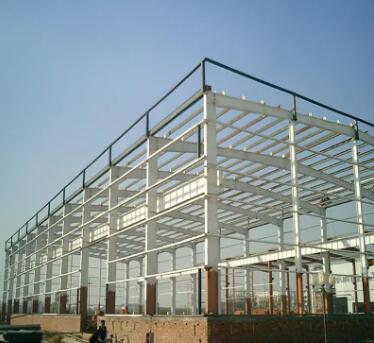Building Blocks of Excellence: Key Properties in Selecting Structural Materials
2024-01-06
Introduction:
The selection of structural materials is a critical aspect of engineering and construction, influencing the performance, safety, and longevity of structures. Engineers must carefully consider a spectrum of properties to ensure that the chosen materials meet the specific demands of the project at hand. In this blog post, we explore the key properties that play a pivotal role in the selection of structural materials, emphasizing their impact on the success of construction endeavors.
1. Strength:
1.1 Tensile Strength:
- Tensile strength measures a material's ability to withstand tension forces without breaking. It is crucial for materials in applications where they may experience stretching or pulling forces.
1.2 Compressive Strength:
- Compressive strength is the ability of a material to resist compression or pushing forces. It is vital for materials supporting heavy loads or structures subjected to compression.
1.3 Yield Strength:
- Yield strength marks the point at which a material begins to deform plastically. It is an essential consideration to prevent permanent deformation in structural elements.
2. Elasticity:
2.1 Modulus of Elasticity:
- The modulus of elasticity indicates how much a material can deform under stress and return to its original shape. Higher values contribute to structural elements that maintain their form after loads are applied.
3. Ductility:
3.1 Ductility:
- Ductility refers to a material's ability to deform without fracturing. Materials with adequate ductility can undergo significant deformation before failure, making them suitable for various structural applications.
4. Hardness:
4.1 Hardness:
- Hardness is a measure of a material's resistance to deformation or scratching. It is crucial for materials exposed to abrasive forces or wear, ensuring long-term durability.
5. Corrosion Resistance:
5.1 Corrosion Resistance:
- Corrosion resistance is essential, especially for materials exposed to environmental elements or chemicals. It ensures that the material maintains its structural integrity over time.
6. Temperature Stability:
6.1 Thermal Expansion:
- Thermal expansion is the degree to which a material expands or contracts with temperature changes. It is critical to prevent structural issues due to temperature variations.
6.2 Thermal Conductivity:
- Thermal conductivity influences how well a material conducts heat. In applications with temperature variations, materials with suitable thermal conductivity are selected to prevent issues like thermal stress.
7. Weight and Density:
7.1 Density:
- Density is the mass per unit volume of a material. It affects the overall weight of structures, and choosing materials with an optimal balance of strength and density is crucial for efficient construction.
8. Environmental Impact:
8.1 Sustainability:
- Sustainable materials and practices are increasingly prioritized in construction. The environmental impact of a material, including its production, use, and disposal, plays a key role in selection.
Conclusion:
The selection of structural materials is a meticulous process that demands a comprehensive understanding of these key properties. Engineers must navigate a delicate balance, considering factors such as strength, elasticity, corrosion resistance, and more, to ensure the success and longevity of the structures they design. By prioritizing these properties and making informed decisions, engineers contribute to the creation of structures that stand not only in physical form but also as enduring symbols of engineering excellence.



